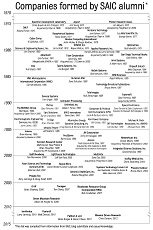I recently read an article about some new initiatives being undertaken by the Department of Energy’s Advanced Research Projects Agency-Energy (ARPA-E). It is my understanding that ARPA-E has been modeled by the Department of Energy after the Defense Advanced Research Projects Agency (DARPA) and that its charter is to pursue high-risk, high-reward energy technologies.
According to an ARPA-E announcement made on April 20, 2011, the agency will soon make a fourth round of funding in the amount of $130 million to develop five new program areas that the agency hopes will “spark critical breakthrough technologies and secure America’s energy future.” These new program areas include rare earth alternatives and breakthroughs in biofuels, thermal storage, grid controls, and solar power electronics.
In its April 20, 2011 announcement, the agency specified the following five new program areas:
- Plants Engineered To Replace Oil (PETRO). Technologies for low-cost production of advanced biofuels are limited by the small amount of available energy captured by photosynthesis and the inefficient processes used to convert plant matter to fuel. PETRO aims to create plants that capture more energy from sunlight and convert that energy directly into fuels. ARPA-E seeks to fund technologies that optimize the biochemical processes of energy capture and conversion to develop robust, farm-ready crops that deliver more energy per acre with less processing prior to the pump. If successful, PETRO will create biofuels for half their current cost, finally making them cost-competitive with fuels from oil. Up to $30 million will be made available for this program area.
- High Energy Advanced Thermal Storage (HEATS). More than 90 percent of energy technologies involve the transport and conversion of thermal energy. Therefore, advancements in thermal energy storage-both hot and cold-would dramatically improve performance for a variety of critical energy applications. ARPA-E seeks to develop revolutionary cost-effective thermal energy storage technologies in three focus areas: 1) high temperature storage systems to deliver solar electricity more efficiently around the clock and allow nuclear and fossil baseload resources the flexibility to meet peak demand, 2) fuel produced from the sun’s heat, and 3) HVAC systems that use thermal storage to improve the driving range of electric vehicles by up to 40 percent. Up to $30 million will be made available for this program area.
- Rare Earth Alternatives in Critical Technologies (REACT). Rare earths are naturally-occurring minerals with unique magnetic properties that are used in many emerging energy technologies. As demand for these technologies continues to increase, rare earths are rapidly becoming more expensive due to limited global supply-prices of many have increased 300-700 percent in the past year. Rising rare earth prices have already escalated costs for some energy technologies and may jeopardize the widespread adoption of many critical energy solutions by U.S. manufacturers. ARPA-E seeks to fund early-stage technology alternatives that reduce or eliminate the dependence on rare earth materials by developing substitutes in two key areas: electric vehicle motors and wind generators. Up to $30 million will be made available for this program area.
- Green Electricity Network Integration (GENI). Recent advances in computation, networking, and grid monitoring have shed light on potential ways to deliver electricity more efficiently and reliably. Today, however, the equivalent of one out of every five electricity dollars is lost to power outages and 30 percent of the grid’s hardware needs replacing. ARPA-E seeks to fund innovative control software and high-voltage hardware to reliably control the grid, specifically: 1) controls able to manage 10 times more sporadically available wind and solar electricity than currently on the grid, and 2) resilient power flow control hardware-or the energy equivalent of an internet router-to enable significantly more electricity through the existing network of transmission lines. Up to $30 million will be made available for this program area.
- Solar Agile Delivery of Electrical Power Technology (Solar ADEPT). The DOE SunShot Initiative leverages the unique strengths across DOE to reduce the total cost of utility-scale solar systems by 75 percent by the end of the decade. If successful, this collaboration would deliver solar electricity at roughly 6 cents a kilowatt hour-a cost competitive with electricity from fossil fuels. This would enable solar electricity to scale without subsidies and make the U.S. globally competitive in solar technology. ARPA-E’s portion of the collaboration is the Solar ADEPT program, which focuses on integrating advanced power electronics into solar panels and solar farms to extract and deliver energy more efficiently. Specifically, ARPA-E aims to invest in key advances in magnetics, semiconductor switches, and charge storage, which could reduce power conversion costs by up to 50 percent for utilities and 80 percent for homeowners. Up to $10 million will be made available for this program area.
I am hopeful that innovations such as these will eventually lead to viable alternative sources of energy. We need to become energy independent and find alternatives to fossil fuels, the supply of which is finite. I will follow these developments closely in the coming months and years.
* * *
On Sunday our family had a very enjoyable Mother’s Day celebration for my wife Betty at the La Jolla Beach and Tennis Club. The club is old but well-maintained, and the food is always good. I hope your Mother’s Day was as enjoyable as ours was.
– Bob




